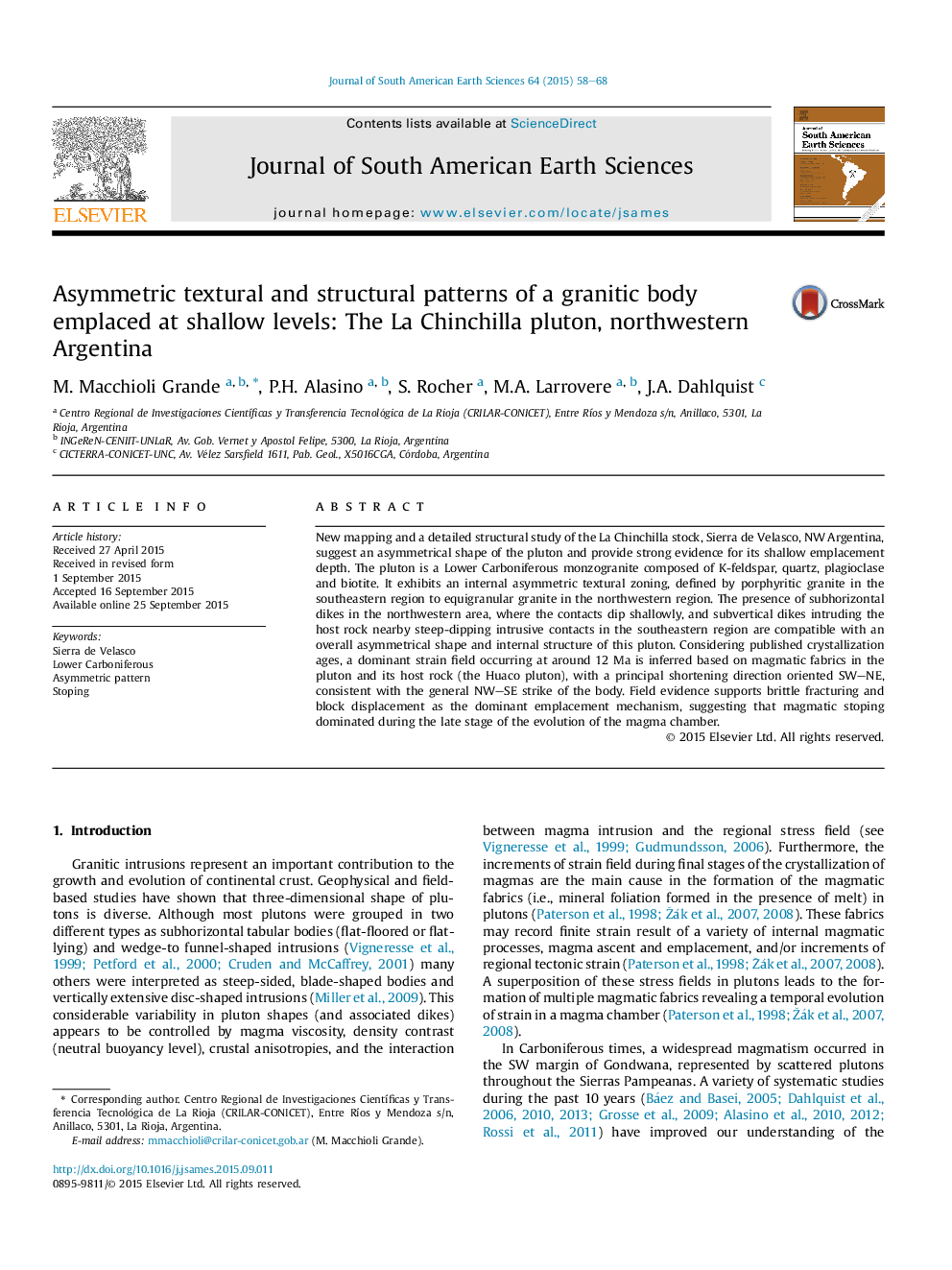| کد مقاله | کد نشریه | سال انتشار | مقاله انگلیسی | نسخه تمام متن |
|---|---|---|---|---|
| 4682110 | 1348894 | 2015 | 11 صفحه PDF | دانلود رایگان |
• We mapped La Chinchilla pluton and found three units exhibiting gradual textural zoning.
• Dikes orientation, contacts' geometry and units' distribution suggested an asymmetric pattern.
• Based on geochemical data we propose the pluton evolved as a single pulse.
• Magmatic foliations indicated a SW–NE regional shortening direction.
• Stoping dominated as an emplacement mechanism, involving brittle fracturing.
New mapping and a detailed structural study of the La Chinchilla stock, Sierra de Velasco, NW Argentina, suggest an asymmetrical shape of the pluton and provide strong evidence for its shallow emplacement depth. The pluton is a Lower Carboniferous monzogranite composed of K-feldspar, quartz, plagioclase and biotite. It exhibits an internal asymmetric textural zoning, defined by porphyritic granite in the southeastern region to equigranular granite in the northwestern region. The presence of subhorizontal dikes in the northwestern area, where the contacts dip shallowly, and subvertical dikes intruding the host rock nearby steep-dipping intrusive contacts in the southeastern region are compatible with an overall asymmetrical shape and internal structure of this pluton. Considering published crystallization ages, a dominant strain field occurring at around 12 Ma is inferred based on magmatic fabrics in the pluton and its host rock (the Huaco pluton), with a principal shortening direction oriented SW–NE, consistent with the general NW–SE strike of the body. Field evidence supports brittle fracturing and block displacement as the dominant emplacement mechanism, suggesting that magmatic stoping dominated during the late stage of the evolution of the magma chamber.
Figure optionsDownload as PowerPoint slide
Journal: Journal of South American Earth Sciences - Volume 64, Part 1, December 2015, Pages 58–68
